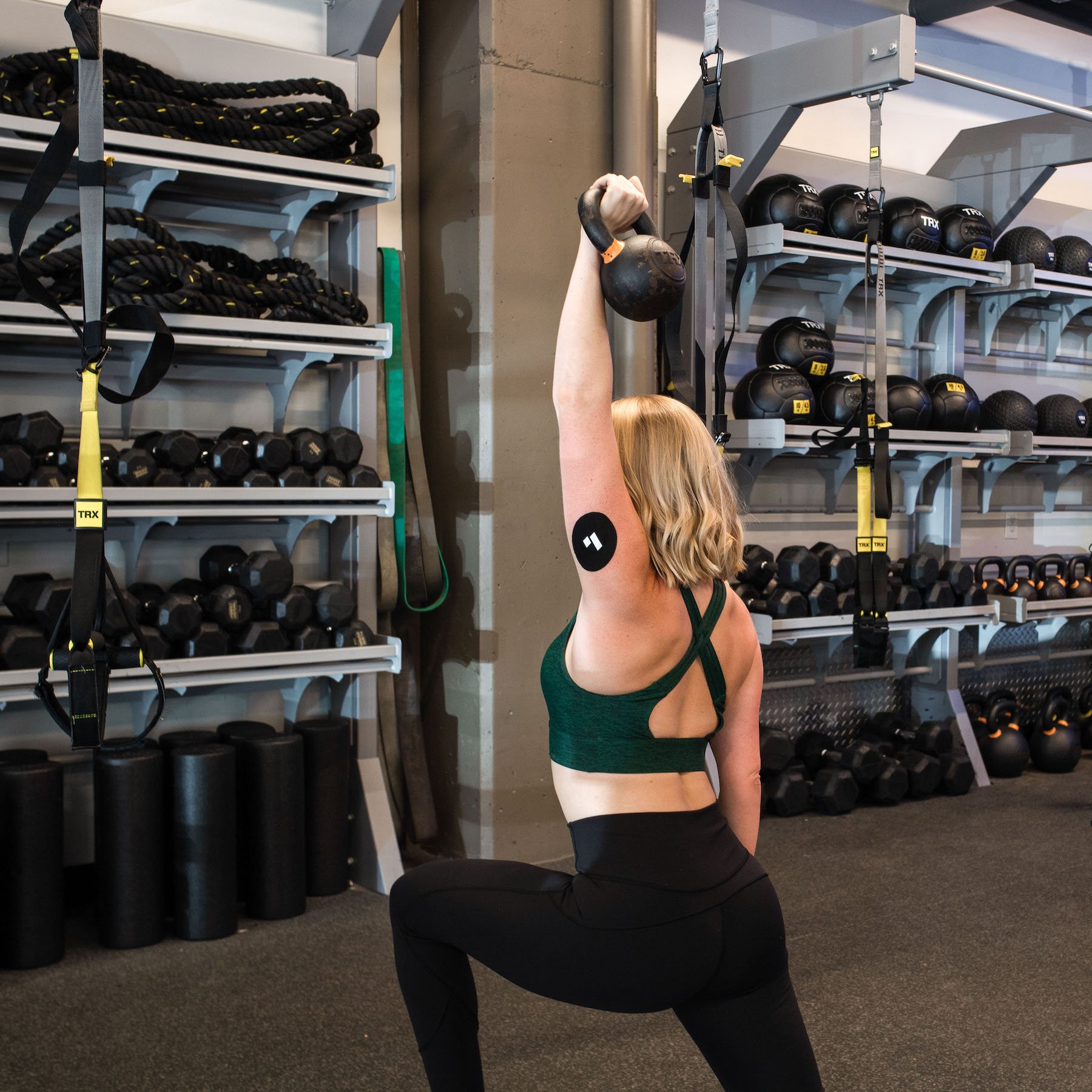Orthopedic surgeons get accused of thinking mechanistically: Something is broken; therefore, something must be fixed. With respect to our joints, we mostly thought that pressure or weight caused arthritis. We told runners to stop running, and we believed that the obese developed arthritis simply from carrying excess weight. Similarly, we blamed torn tendons on excess force. Perhaps you’re working out too much. Perhaps you should lift less weight.
Well, it turns out that the mechanisms leading to tendon-related disorders and osteoarthritis are far more complicated. Scientists are just starting to unlock some of the key contributors to joint health. And they’re not too dissimilar from the contributors to our overall health. It turns out that running doesn’t cause arthritis, and lifting weights usually will not cause a normal tendon to fail.
“You can’t outrun, out-exercise, or medicate away a bad diet. It’s time that we emphasize the importance of forks over knives … and our forks over our pills.”
Research into osteoarthritis and tendon-related dysfunction is starting to reveal that our diet and lifestyle—which is to say, our metabolic health—have a lot to do with many of the conditions we previously attributed to overload, age, genetics, and other mechanistic etiologies. Glucose levels, AGEs, cholesterol levels, uric acid levels, adipokines, and other bioactive compounds appear to impact our overall health and our joint and tendon health.
Keeping your joints healthy means keeping your metabolic systems healthy. But since it is not clear that reversing our metabolic dysfunction will restore our joint health, better to start on a path to metabolic health now. I always say that you can’t outrun, out-exercise, or medicate away a bad diet. It’s time that we emphasize the importance of forks over knives … and our forks over our pills. Your knees, shoulder, low back, and hips might thank you.
How Our Joints Work
A quick refresher on our joints’ mechanics and components: They are a complex framework of tissues well adapted to allow us to walk, run, squat, move about in space, or move objects with balance and ease.
The bones support a cushioning layer of cartilage on their ends. Many joints also have a cartilage disc referred to as a meniscus or a labrum, which helps cushion the forces across the joint and contributes to our joints’ stability.
The ligaments around our joints provide stability. Different ligaments contribute to stability in different positions or motions. They are complex in their makeup and highly dependent on each other to function properly. The tendons that attach to the bones surrounding our joints represent the functional attachment of a muscle to the bone. Muscles provide force to allow us to move, position our arms in space, grasp, and move objects.
Three Ways Metabolic Mechanisms Affect Joints
Cholesterol
To understand how cholesterol affects tendons, it helps to know that tendons are a tight collection of collagen bundles, much like support cables on a bridge. Any break in those bundles, or alteration in their microscopic architecture, can lead to a weakening of those tendons.
Just as cholesterol deposits inside the walls can block our arteries, the same can occur in our tendons. Cholesterol deposits cause weakness in the tendon structure. Cholesterol can also be oxidized (OxPL) due to inflammation, further damaging the tendons.
Indeed, studies show an association between tendinopathy and abnormal cholesterol. Tendon pain may also be more common in people with hyperinsulinemia or type 2 diabetes.
Cholesterol can put people at higher risk for certain tendon injuries too. Studies show an association between rotator cuff tears and an abnormal lipid profile. Other papers found high cholesterol in patients with rotator cuff tears.
Cholesterol and uric acid deposits can also lead to an increase in inflammation, which can further weaken the tendon’s structural integrity.
Many researchers are looking at tendinopathy as a risk factor for heart disease, metabolic syndrome, and hyperinsulinemia since all share metabolic changes and some degree of cholesterol deposits in the tendon and blood vessel walls.
Collagen damage
Remember the role of collagen in our tendons, the support cables? It turns out poor glucose regulation can affect our joint and tendon architecture by damaging the collagen. Excess glucose in the blood can lead to the production of damaging compounds called advanced glycation end products (AGEs). These AGEs can crosslink with collagen, increasing its stiffness and compromising the strength of the tendon.
Inflammation
These same AGEs can induce low-grade chronic inflammation, which can further compromise the tendon structure and interfere with healing within the tendon. To understand how, let’s go back to our bridge-cable analogy.
If a portion of the cable is rusted and weakened, the cable will fatigue and rupture more easily. Our tendons are no different. The collagen bundles that comprise our tendons are intricately linked. Their strength, stiffness, and ability to withstand stressors are dependent on them being structurally sound. As we saw above, the more surface area in our tendons occupied by fatty deposits (or other deposits like uric acid), the weaker the tendon. But the body’s reactions to these deposits can also compromise structural integrity.
Healing is a complex topic. It requires a proper environment, with the appropriate cell types, the proper chemical mediators, and the proteins necessary to rebuild a normal tendon framework. Inflammation, the body’s attempt to heal, can actually create a hostile environment with the wrong cell types or chemical mediators. In that case, the healing might not be as timely nor as robust, and the tendon remains damaged or gets worse.

Inflammation and glucose levels: How high blood sugar can turn a good system bad
Inflammation helps heal your body, but chronic inflammation can cause serious damage. Here’s how a healthy lifestyle—including a low-sugar diet—can help keep it in check.
Read the ArticleWhat You Can Do About It
Longevity and healthspan are tightly related. The factors that contribute to both are related to our metabolic health. Unfortunately, many people follow a predictable path in aging. Our tendons and joints are no different than our artery walls: Metabolic dysfunction negatively affects them.
Lipid issues and metabolic health are what we call “area under the curve (AUC)” issues. That means the damage they cause is related to both the amount of time the dysfunction is present and its degree. Most people with type 2 diabetes today have had insulin resistance for more than a decade.
The sooner we correct metabolic dysfunction, the better. Insulin resistance leads to predictable changes that affect nearly every organ in our body over time. Our tendons and joints are not spared in that process. Based on our current understanding, there is a solid chance that correcting metabolic dysfunction at a young age will protect your joints and tendons long into the future.
Exercise plays a critical role in managing metabolic dysfunction, but our diets play an even larger role. Once we develop insulin resistance, our muscles no longer take in glucose as well and do not process it into glycogen (stored glucose) as efficiently. That leaves the liver to deal with any excess, causing elevated triglycerides and dyslipidemia. A decrease in your HDL follows. Over time, those lipids will have effects throughout your body, including your tendons.
Studies done on normal weight, inactive college students reveal that a large percentage of them are insulin resistant. But the authors also show that exercise was capable of reversing insulin resistance in these same college kids. Exercise improves insulin sensitivity. Exercise improves glucose metabolism. Exercise also promotes tendon health. Tendons will respond to load by increasing their cross-sectional area and improving the strength of their attachment to bone.
Exercise may not be able to reverse 30 years of metabolic dysfunction, but it’s never too late to care for your current and future self.








